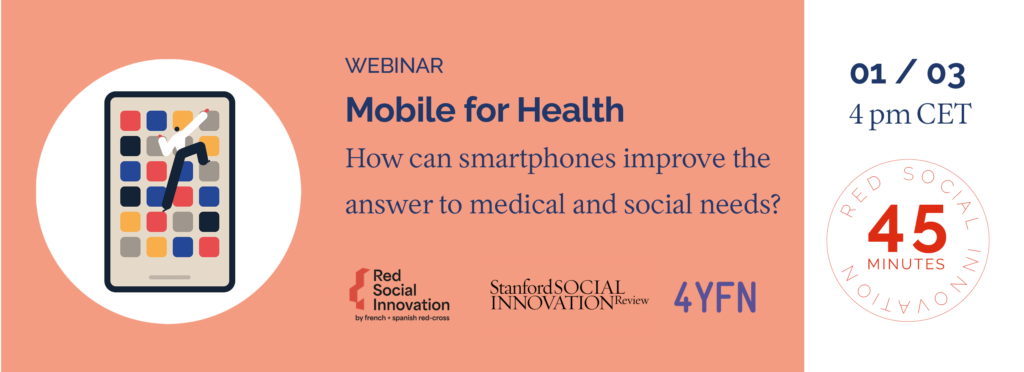
Over the last two years, the pandemic has reminded us of the pressing need to provide quality healthcare for all. When designed properly, mobile technologies can contribute to delivering healthcare service to remote areas, providing health workers with enhanced skills while facilitating the daily life of patients. For people living with disabilities, mobile technologies can also represent an opportunity to be more independent.
Beyond the thousands of mobile applications produced by the entertainment industry, which solutions can support the mission of the Red Cross Red Crescent Movement?
In May 2020, 48% of the 17 million general practice appointments made in the UK were carried out over the telephone according to the NHS. This shift away from the real-life meetings is a direct consequence of the Covid-19 pandemic, but also reveals a trend that was already in practice prior to the crisis. In France, the number of teleconsultations has been multiplied by 40 between 2020 and 2021.
In Asia, the number of downloaded applications has dramatically increased: 80% in China and 190% in India. Far ahead of the medical or social sectors, the most downloaded applications on the App Store – which currently has 1.96 million apps available for download – are coming from the entertainment sector. With nearly half of the world’s adults owning a smartphone, mobile technologies represent an opportunity for improving public health, whether it’s the ability to diagnose and treat people in remote areas, coordinate appointments more easily, raise awareness of disease outbreaks, address mental health emergencies or improve patient care.
The use of mobile phones in the health sector – known as mHealth – has been growing strongly for several years, particularly in low- and middle-income countries, as the penetration rate of telephone networks often exceeds that of other infrastructures, such as roads or electricity. Telephone-based health care services or hotlines remain the most developed mobile health initiatives globally, followed by appointment reminders or community mobilization.
According to a 2021 study conducted by two Iranian researchers from Tabriz University of Medical Sciences, mobile apps in the health sector are particularly effective in creating accessible and low-cost solutions. These can be classified into four categories: prevention, diagnosis, treatment and protection.
In Mexico, the social enterprise Unima is democratizing access to tuberculosis screening with a low-cost, high-tech system that combines cell phones with biotechnology and artificial intelligence. After collecting a drop of blood from the patient, the doctor, nurse or healthcare worker can analyze it by sending a photo to a mobile application. A solution that requires no laboratory equipment and can be set up in less than fifteen minutes.
In Spain, the EntamAR program uses augmented reality to improve the daily lives of children hospitalized for long periods of time. Through creative games using drawing, images and puzzles, this interactive application allows Spanish Red Cross volunteers to stimulate children’s creativity and support them in their school activities during their stay in the hospital.
On March 1, 2022, during the Mobile World Congress, join the 45-minute online event organised by Red Social Innovation, in partnership with the Stanford Social Innovation Review and the Four Years From Now event and discover several solutions using mobile technologies in the health sector.


